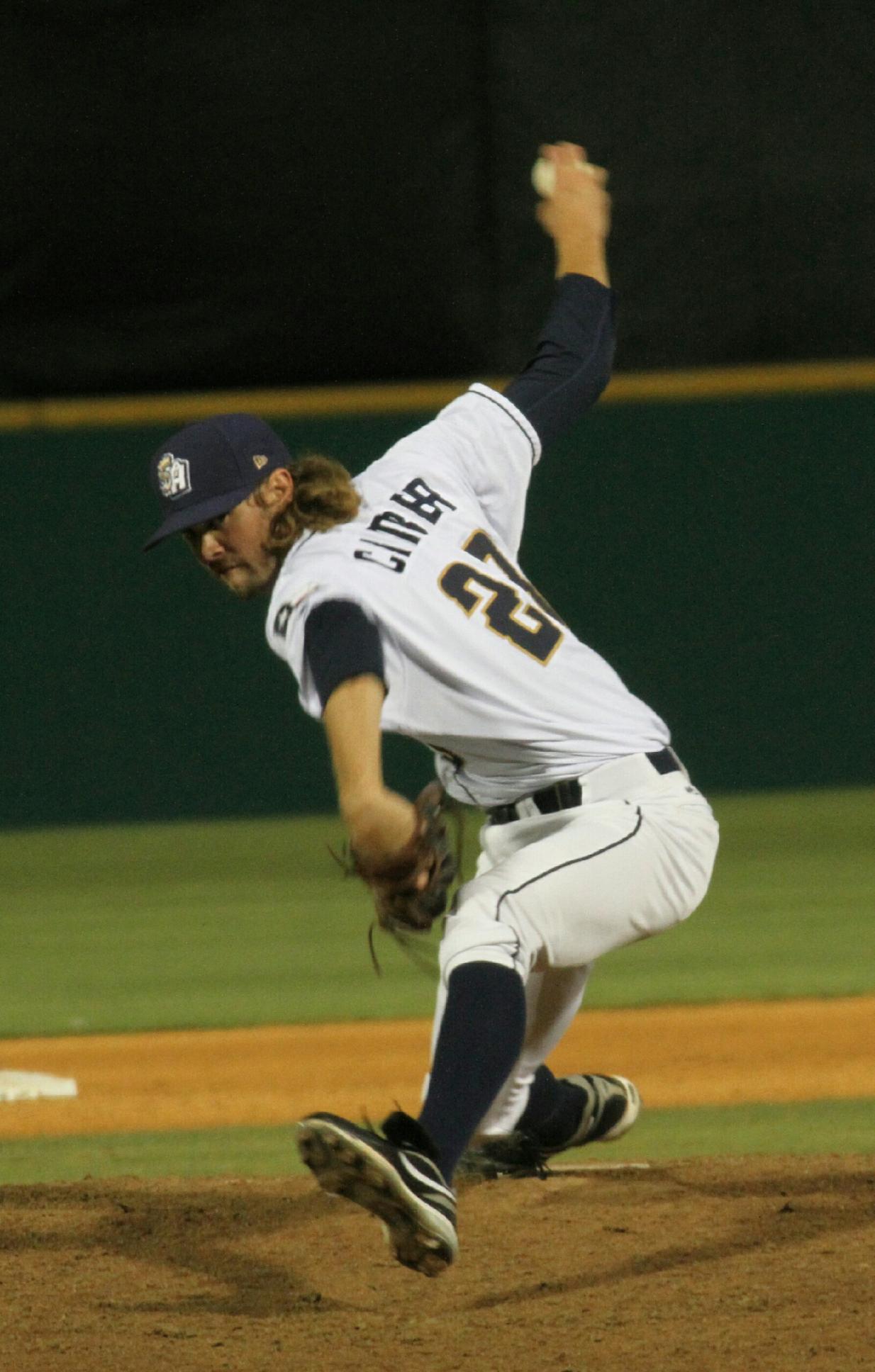Adam Cimber: Padres/Indians RHP
1. Could you tell us your story on dropping down?
I dropped down sidearm when I was 14. At the time a was short, skinny (still am) and didn't throw hard. My dad told me if I want to continue playing ball at a higher level, I needed to be different and set myself apart somehow. That summer I started experimenting with dropping down once every few pitches, and soon realized that it was those pitches that seemed to get outs for me. So I started doing it full time by the time I was 15. Eventually a got taller and a little stronger while I was at Puyallup High School, my velocity progressed and I was fortunate enough to get an opportunity to play in college at the University of Washington.
2. What are some of the advantages you have from your arm angle?
Obviously the movement, I honestly think deception is the biggest part of it though. When you come in after a bunch of guys throwing over the top and can show the hitter a different look, you've got the advantage. Hitting's all about timing, and coming from a different angle, combined with the movement, certainly disrupts what a hitter is trying to do.
3. If you didn't drop down, do you think you would have had the same success?
That's tough to say how successful I would have been had I stayed over the top, but I certainly don't think I would have been given the amount of opportunities had I just been another stock righty. Dropping down certainly got me on the mound more often during high school and led to opportunities to compete in front of the right people. I dropped down pretty early as it was so I think everything worked out the way it was supposed to.
4. What would you tell someone debating on changing their arm angle?
I'd say certainly weigh the options. Don't do it unless you know what you're doing or can bounce ideas off somebody who does. But I definitely owe everything I've accomplished to embracing being different and running with something a lot of people laughed at in the beginning. My advice is to just do what feels right and compete to be the best you.
5. Are there any mechanical tips that you'd give to someone throwing sidearm/submarine?
I can't honestly say I have my own mechanics down to a science, I've sort of always just been the "just do it" type, and if it felt good, repeat it. If there is one thing a try to focus on, it's keeping my elbow close to my back hip throughout my delivery. I feel more powerful when I'm compact. At the same time, I put a lot of emphasis on keeping my arm and hips loose. Be loose but compact.
6. What pitches do you throw?
I throw a fastball, slider, change up, and occasionally will show a spike curve. Consistently, my velocity is 87-90.
7. How do you pitch to lefties/righties?
I used to pitch in to righties through high school and college, but have started learning how important the outside corner is in pro ball. I've found a lot of righties default to looking in when they see a sidearm guy on the mound, so it's a nice tool to be able to establish the fastball to both sides of the plate. Lefties, just the opposite. I got away with pitching them outside in college, but the hitters in pro ball recognized that was my go to. It's important to be able to stick a fastball in to a lefty so they can't cheat armside. Also, the elevated fastball has been a huge pitch for me. Guys are told to look for a sidearm guy to leave the ball up, so they're eager to chase up in the zone.
8. What is your favorite part about pitching from down there?
Honestly I've always been different, and I think I enjoy being the guy on the team with a different look. It's been fun going against the grain and being the "weird guy" my whole career.





